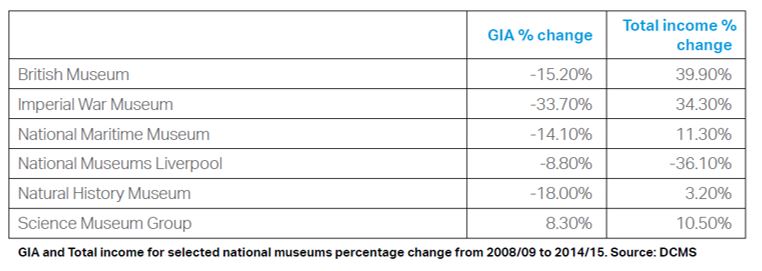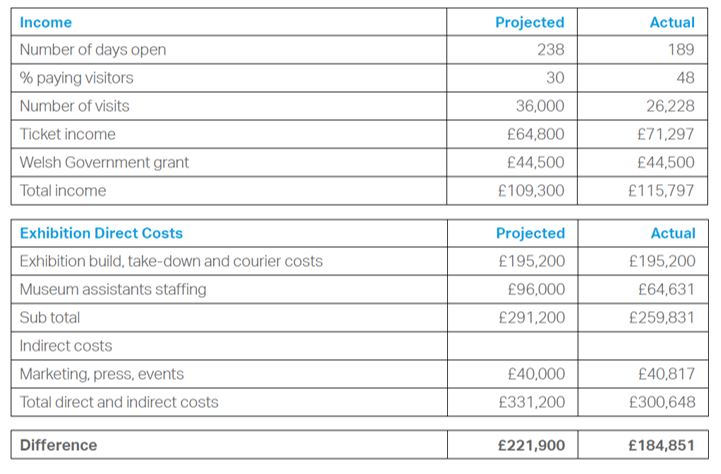In June 2017 Dr Simon Thurley completed a review for the Welsh Government into Amgueddfa Cymru – the National Museum of Wales. The Review made 17 recommendations, focusing keenly on the future financial sustainability of the organisation. On 23 January Plenary will debate the contents of this report.
Amgueddfa Cymru – the National Museum of Wales – is a network of seven museum sites across Wales: National Museum Cardiff, St Fagans National Museum of History, National Slate Museum, National Roman Legion Museum, National Waterfront Museum, National Wool Museum and Big Pit National Coal Museum.
The National Museum was established by Royal Charter in 1907. The vast majority of its funding comes as Grant in Aid from the Welsh Government: in 2015-16 this amounted to 84.1% of its operating cost (excluding capital developments, such as at St Fagans, for which the Museum has generated significant non-Government funding). Each year the Welsh Government provides Amgueddfa Cymru with a remit letter, setting out how much Grant-in-Aid the Museum will receive, and what the Welsh Government expects the museum to do with it.
Thurley found the Museum to be a “successful and thriving organisation of which Wales should be proud”, and “one of the great museums of the UK”. However, he also felt that the Museum possessed “a lack of ambition in the story that was being told”. Why, he questioned, were the seven sites “telling part of the social history of a small country”, rather than “telling the story of how Wales … together with its larger neighbours England and Scotland, transformed the world in the 19th century?”
“Stagnated” visitor numbers
In the 2017-18 remit letter, the Welsh Government tasks Amgueddfa Cymru with increasing its visitor numbers. The Thurley Review notes that the number of visitor numbers has “stagnated”, hovering around 1.7 million for the last five years: albeit at a time when a significant part of St Fagans was closed for redevelopment. Although the visitor numbers to National Museum Cardiff rose by 34% between 2010 and 2015, Thurley questions whether “such an outstanding museum, in a prominent building in a capital city, could not do better”?
St Fagans has recently undergone extensive redevelopment work, involving £7m of Welsh Government funding. Thurley states that Amgueddfa Cymru was “unquestionably right to invest in this site to the level it has”. Having received 531,000 visitors in 2015-16, the National Museum estimates that visitor numbers to St Fagans could be as high as 850,000 after five years of full opening.
“Extremely poor” commercial performance
Since 2012 the Museum has experienced cuts in core Grant-in-Aid revenue in cash terms of 11%. However, the average cut to UK Government DCMS-funded national museums between 2008/9 and 2014-15 was 20%. GIA and total income change in DCMS-funded National Museums, 2008/9 – 2014-15  Although the differing date ranges mean that these two sets of data are not directly comparable, Thurley concludes that “Amgueddfa Cymru is significantly more reliant on grant in aid than the English nationals, but in comparison with Scotland its reliance is about the same”. The problem in Wales is that “the commercial performance of Amgueddfa Cymru is extremely poor”. The majority of profit from the Museum’s trading arm comes from the operation of two car parks, and between 2014/15 and 2015/16 (whilst work at St Fagans was under way) the trading arm’s profit reduced by about £100,000. How can this problem be addressed?
Although the differing date ranges mean that these two sets of data are not directly comparable, Thurley concludes that “Amgueddfa Cymru is significantly more reliant on grant in aid than the English nationals, but in comparison with Scotland its reliance is about the same”. The problem in Wales is that “the commercial performance of Amgueddfa Cymru is extremely poor”. The majority of profit from the Museum’s trading arm comes from the operation of two car parks, and between 2014/15 and 2015/16 (whilst work at St Fagans was under way) the trading arm’s profit reduced by about £100,000. How can this problem be addressed?
An “ends based policy for access”: paying for access to some activities
Free entry to the National Museum has long been a commitment of the Welsh Government, with the First Minister stating in 2015: “there will be no payment for entry into any of the national museum attractions”. In 2016, however, National Museum Cardiff ran an exhibition with an entry charge – Treasures: Adventures in Archaeology. Though the exhibition’s run was curtailed by 49 days due to industrial action, whilst narrowly missing its attendance targets, it exceeded its income target. Treasures: Adventures in Archaeology Exhibition summary of income and costs  It should be noted that, although there was a charged-for element to the exhibition, the vast majority of visitors - mainly children - did not pay. Thurley recommended that “the Welsh Government considers moving to an ends based policy for access to Amgueddfa Cymru rather than a means based policy”. He felt that this move “would allow the Museum to keep its eye on the desired access policy while itself determining the balance between charged and free services and the appropriate levels of charge”. He stressed that “it is likely that access to the core collection and permanent displays would remain free”, with charges levied only on extra activities – such as special exhibitions.
It should be noted that, although there was a charged-for element to the exhibition, the vast majority of visitors - mainly children - did not pay. Thurley recommended that “the Welsh Government considers moving to an ends based policy for access to Amgueddfa Cymru rather than a means based policy”. He felt that this move “would allow the Museum to keep its eye on the desired access policy while itself determining the balance between charged and free services and the appropriate levels of charge”. He stressed that “it is likely that access to the core collection and permanent displays would remain free”, with charges levied only on extra activities – such as special exhibitions.
Not listening to a “problem child”
In some respects, Thurley felt that Amgueddfa Cymru was being held back by its relationship with the Welsh Government. He stated that “the Museum feels that it is not being listened to in terms of its funding requirements and that the Welsh Government is not clear about what a national museum is for”. At the same time, “there is a feeling within the Welsh Government that the Museum is a ‘problem child’”, and “that it lacks the competence to run itself effectively”. Examples were cited, he says “of inappropriate levels of political engagement in the Museum’s operational activity”.
Thurley recommends that “the Welsh Government and Amgueddfa Cymru develop a shared ten year vision for Amgueddfa Cymru with a five year focus and three year funding agreement”. Such a move would be a break from how the Welsh Government treats other sponsored bodies – such as the Arts Council of Wales, which has an annual funding agreement, as the National Museum does currently.
Historic Wales and the future of the Museum
The Cabinet Secretary had previously committed to forming a new body, to be known as Historic Wales, stating in September 2016: “I now want to progress work to bring the commercial functions of Cadw and Amgueddfa Cymru - National Museum Wales together”. Following an outcry in the museum sector, with some stakeholders seeing this as an encroachment on the independence of the Nation Museum, this proposal was softened to establishing a “Strategic Partnership” between Cadw (the Welsh Government’s heritage arm), the Royal Commission on the Ancient and Historical Monuments of Wales (RCAHMW), the National Library and the National Museum. This partnership is looking at issues including skills development, commercial activity, and collaborative delivery of back office functions.
Cadw’s income has increased considerably in recent years. In the last ten years its income has almost doubled, to £6.6 million in 2016-17, whilst its operating costs have remained at about £20 million. There are crucial differences between Cadw and the National Museum: for example, Cadw charges for entrance to many of its sites, whereas Thurley stated that access to permanent displays in Amgueddfa Cymru would probably remain free, however it changes its admissions policy in the future.
That said, the Strategic Partnership will provide a chance for the Museum to work closely with Cadw, and learn how it has grown its income so significantly in the last decade. Will this be sufficient to enable Amgueddfa Cymru to fulfill its commercial potential, or is implementation of the recommendations of the Thurley review also needed?
Article by Robin Wilkinson, National Assembly for Wales Research Service






